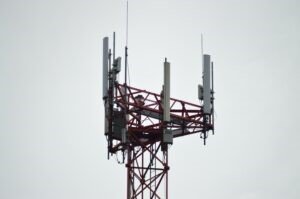A few different topologies are used more often than others in computer networking. I will discuss the five most popular types of computer network topologies just as follows: bus, hybrid, mesh, ring, and star. They are unique in their benefits and drawbacks, and As a result, it is crucial to analyze them before deciding which is best for your company.
1. Bus Topology
The bus topology is the most basic type of network. A single cable connects all of the devices in this configuration. This kind of network is easy to set up and does not require much cabling. However, it can be difficult to troubleshoot because the entire network will go down if the backbone fails.
Advantages of bus topology:
- Easy to set up
- Does not require much cabling
Disadvantages of bus topology:
- If the backbone fails, the entire network will go down.
- Can be difficult to troubleshoot.
2. Hybrid Topology
The hybrid topology combines two or more different types of network topologies. This type of network is often used in larger businesses because it offers flexibility and scalability. The star-bus topology is the most common type of hybrid topology, which combines the benefits of both the star and bus topologies.
Advantages of hybrid topology:
- Offers flexibility and scalability.
- A common type is a star-bus topology, which combines the benefits of both the star and bus topologies.
Disadvantages of hybrid topology:
- Can be more expensive to set up and maintain than other types of networks.
3. Mesh Topology
In a mesh topology, each device is connected to every other device in the network. In t type of network is very reliable because many others can take its place if one connection goes down. However, it can be challenging to set up and expand because each device needs to be connected to every other device.
Advantages of mesh topology:
- It is very reliable because many others can take its place if one connection goes down.
Disadvantages of mesh topology:
- Can be difficult to set up and expand because each device needs to be connected to every other device.
4. Ring Topology
In a ring topology, each device is connected to two other devices in the network, forming a continuous loop. Because there are several paths for data to travel, this network is highly dependable. However, it cannot be easy to troubleshoot because data can travel around the ring in either direction.
Advantages of ring topology:
- It is very reliable because there are multiple paths for data to travel.
Disadvantages of ring topology:
- This can be difficult to troubleshoot because data can travel around the ring.
5. Star Topology
All devices are connected to a central device in a star topology, typically a switch or hub. This type of network is also straightforward to set up and expand because each device only needs to be connected to the central device.
However, if the primary device fails, the entire network will go down.
- Advantages of star topology:
It is easy to set up and expand because each device only needs to be connected to the central device.
Disadvantages of star topology: - If the primary device fails, this will bring the entire network to a halt.
Conclusion
Which type of computer network topology is right for your business? I think it will depend on your specific needs and requirements. Talk to a professional about which type would be best for you.
On purpose here at Direct Compiance link network service is a specialist in the IT industry with over 15 years of experience.
We currently work as a consultant. Our services range from all areas of the network, AI installations for Smart homes, and Security services such as the installation of CCTV Cameras and spy AI gadgets. We also help businesses choose the right type of network for their needs. Contact us for more information.




